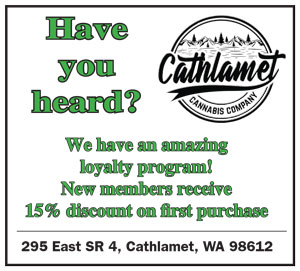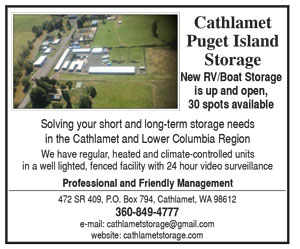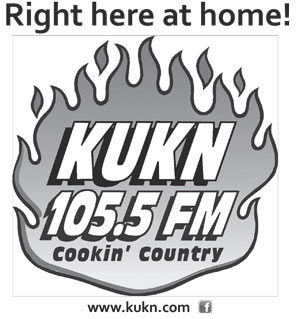Record breaking salmon harvest continues
Coho return far above 10-year average
October 16, 2014
The Columbia River Compact on Wednesday approved a new round of commercial fisheries for both tribal and non-Indian commercial netters on the mainstem Columbia that will likely bring to a close what has been a record-breaking harvest on a near-record return of chinook salmon and a revived coho salmon run.
“In 2014, the tribal fishery has set a record for modern times for open days of commercial gill-net fishing and had record total catches,” according to an Oct. 8 staff report prepared by the Columbia River Inter-Tribal Fish Commission and its member tribes, the Nez Perce, Umatilla, Warm Springs and Yakama. The report was presented during the Compact’s meeting. The Compact, which sets Columbia mainstem commercial fishing seasons, is made up of representatives of the Oregon and Washington department of fish and wildlife directors.
“By the end of this week (Oct. 18), the tribal fishery is projected to have caught over 260,000 fall chinook, over 26,000 steelhead, and over 34,000 coho” during the fall season, the report says.
“The projected URB [upriver bright] harvest rate through Oct. 10 is 21.1 percent. The projected B steelhead harvest rate through Oct. 3 is 14.7 percent,” the tribal report says. Those totals remain well within harvest limits. Both runs include Snake River-bound stocks that are protected under the Endangered Species Act.
“In total with the planned fishery next week, the Drano Lake Fishery, and late fall platform fishing, the total URB harvest rate is expected to be 21.3 percent out of 30 percent allowed. The B steelhead harvest rate is expected to be 18.2 percent out of 20 percent allowed.
“A three-night fishery is expected to get the tribal fishery up to about a 21.3 harvest rate on URB’s out of a 30 allowed. This would leave over 57,000 URB’s remaining available to harvest, the tribal report says. That three-night fishery proposal, which was approved by the Compact, is scheduled to take place next week in Columbia reservoirs upstream of Bonneville, The Dalles and John Day dams.
Runs of upriver fall chinook salmon, including URBs, Bonneville Hatchery Pool tules and some so-called Mid-Columbia brights, this year are tracking to be the second most ever. Fall chinook counted at Bonneville since Aug. 1 totaled 836,672 adult fish through Thursday as compared to 917,514 through Oct. 9 a year ago. The final 2013 count turned out to be a record, 953,222.
This year’s coho salmon tally at Bonneville was 209,824 through Thursday, which is a vast improvement over 2013 (43,846) and the recent 10-year average (89,403).
Those “upriver fish” – salmon headed for hatcheries and spawning grounds upstream of Bonneville in Idaho, Oregon and Washington – are setting records upstream as well.
At the lower Snake River’s Lower Granite Dam, a count of 209 adult fall chinook Thursday brought the 2014 total to 56,722 to set the record since counts began at the dam in 1975. The previous high was 56,565 last year.
The coho total through Thursday was 12,856 adult fish, which more than doubles the previous high of 5,060 in 2011, according to data posted online by the Fish Passage Center. The 2013 total at season’s end was 626 adult coho and the 10-year Lower Granite average is 1,429.
The Compact also approved four 12-hour non-tribal commercial fisheries in the lower Columbia’s zones 1-3 with smaller mesh gill nets that for the most part target coho and are less effective at catching larger chinook salmon. In recent commercial catches in Zones 4-5, chinook have weighed in at 15 pounds or more on average while coho have been 9 pounds or less.
The so-called “tangle net” fisheries approved Wednesday are from Warrior Rock Lighthouse at river mile 87.5 down to the mouth of the Columbia. Zones 4-5 are from Warrior Rock upstream to Beacon Rock, which is located near river mile 141 about five miles downstream from Bonneville Dam. The four lower river non-tribal fisheries begin at 7 a.m. Oct. 13, 14, 20 and 21. Allowable sales include salmon and shad, though unclipped coho must be released.
The Compact also approved 12-hour non-tribal commercial fisheries beginning at 7 a.m. Oct. 9, 10, 15, 16, 17, 22, 23 and 24 in Zones 1-3 for up to 6-inch mesh nets and four night time fisheries between Oct. 16 and Oct. 24 with gear up to 8-inch mesh.
According to data posted on ODFW’s web site, non-tribal commercial fishers had harvested 47,567 fall chinook and 12,368 coho in fall mainstem fisheries through Oct. 2-3.
The Oregon and Washington agencies estimate that, including complete, on-going, and proposed fisheries:
-- Impacts to lower Columbia natural (LCN) chinook are estimated at 41.0 percent (41.0 percent allowed).
-- Impacts to wild Group B steelhead are estimated at 1.8 percent (2.0 percent allowed).
-- URB impacts are estimated at 11.9 percent (15.0 percent allowed).
-- Impacts to Lower Columbia River (LCR) coho are estimated at 19.4 percent (22.5 percent allowed).
The non-tribal commercial fleet has also harvested an estimated 24,542 fall chinook and 151,814 coho salmon in estuary “select areas.” The select areas on off-channel sites where juvenile hatchery fish receive late stage rearing. Those young salmon are then released as smolts when they are ready to journey to the ocean.
After maturing in freshwater, most of the fish acclimated in estuary safe areas return. The select area program is specifically designed to provide commercial fisheries, as well as sport fisheries, in areas where few wild, ESA-protected fish are encountered.








Reader Comments(0)